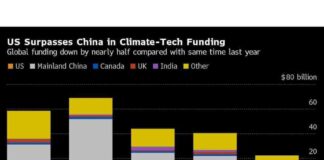The Impact of USAID Cuts on American Farmers
In the intricate web of global aid and domestic agriculture lies a crucial connection that has long been a lifeline for American farmers. The U.S. International Agency for Development, better known as USAID, stands as the largest provider of humanitarian food assistance worldwide. Its operations heavily rely on the agricultural produce of U.S. farmers, who supply vast quantities of essential crops like corn, wheat, and rice to support USAID’s initiatives. However, recent shifts in funding and policy have raised concerns about the future of this vital partnership and its implications for American agriculture.
The Historical Relationship Between USAID and American Farmers
Historically, USAID has played a pivotal role in facilitating the exchange of agricultural goods between U.S. farmers and international aid programs. Through strategic partnerships and procurement agreements, American farmers have been able to supply large quantities of staple crops to support humanitarian efforts around the globe. This symbiotic relationship not only bolstered the agricultural sector in the United States but also contributed to addressing food insecurity and promoting economic development in vulnerable regions.
The Consequences of USAID Cuts on American Farmers
However, recent budget cuts and policy changes within USAID have cast a shadow of uncertainty over the future of this crucial partnership. Reductions in funding and shifts in procurement practices have left many American farmers grappling with the prospect of losing a significant market for their produce. The repercussions of these changes are far-reaching, impacting not only the economic viability of farming operations but also the broader implications for food security and global humanitarian assistance efforts.
Expert Insights on the Current Landscape
According to Jordan Schermerhorn, a leading researcher in agricultural economics, the ties between USAID and American farmers are deeply intertwined and have profound implications for both sectors. Schermerhorn’s research highlights the critical role that U.S. farmers play in supplying essential food aid through USAID programs and underscores the potential consequences of disruptions to this supply chain. As the landscape of international aid continues to evolve, it is imperative to consider the impact of these changes on domestic agriculture and the broader global food system.
In conclusion, the relationship between USAID and American farmers stands at a crossroads, with significant implications for both sectors. As policymakers and stakeholders navigate the complexities of global aid and domestic agriculture, it is essential to prioritize the sustainability of this partnership and its contributions to food security and economic development. By fostering collaboration and innovation, we can ensure a resilient future for American farmers and the communities they serve.
This article delves into the intricate connection between USAID and American farmers, highlighting the historical significance of their partnership and the potential consequences of recent funding cuts and policy changes. Through expert insights and analysis, we gain a deeper understanding of the challenges facing both sectors and the importance of maintaining a robust agricultural supply chain for global humanitarian efforts. As we confront the uncertainties of the current landscape, it is crucial to recognize the value of this partnership and its impact on food security and economic development worldwide.






















